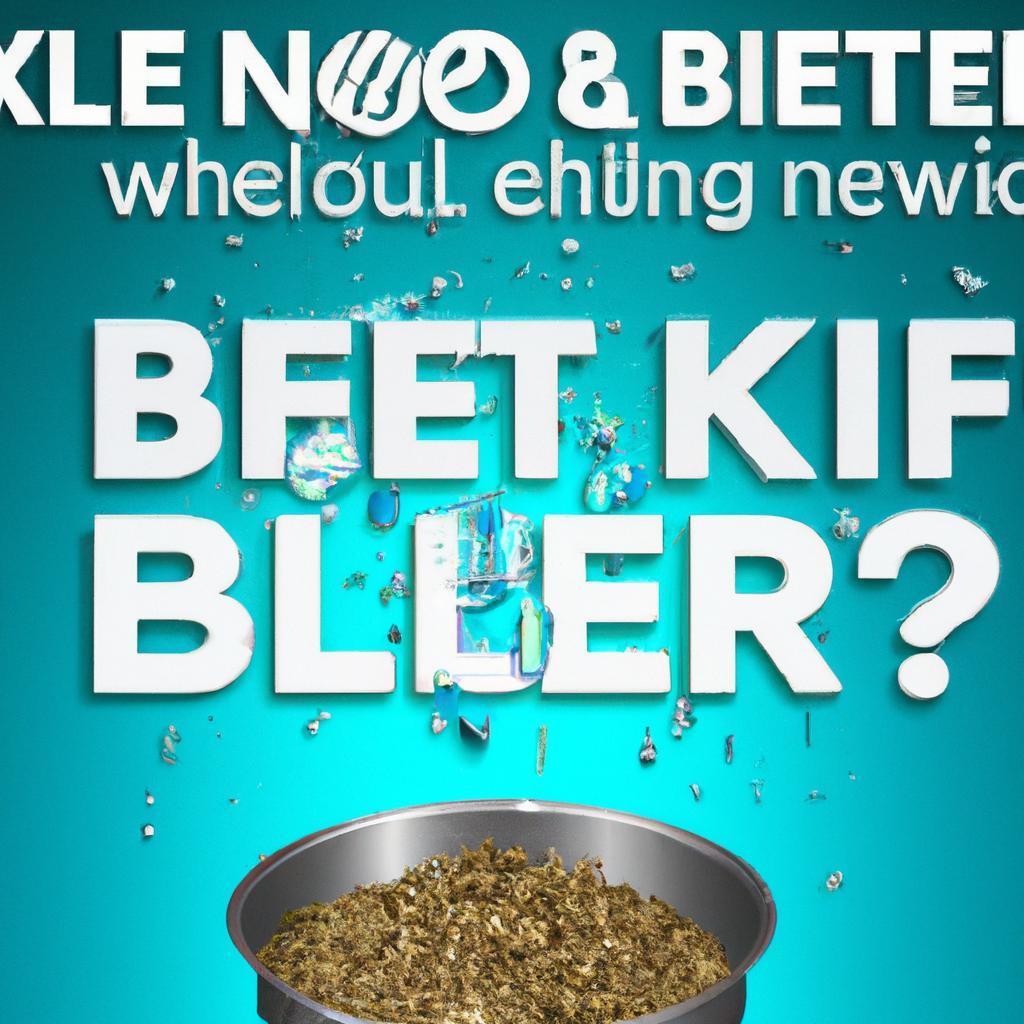As the sun dipped below the horizon, Max, a spirited golden retriever, eagerly awaited dinner. His owner, Sarah, faced a dilemma: the shiny can of wet dog food or the familiar bag of dry kibble. She remembered how Max’s coat gleamed after switching to wet food, his energy levels soaring during their evening walks. The rich aroma and moisture in wet food not only tantalized his taste buds but also kept him hydrated. Sarah realized that for Max, wet food wasn’t just a meal; it was a pathway to a happier, healthier life. Wouldn’t your furry friend deserve the same?
Contents
- Evaluating Nutritional Benefits of Wet Dog Food Compared to Dry Options
- Understanding the Impact of Moisture Content on Canine Health
- Assessing Palatability and Its Role in Encouraging Healthy Eating Habits
- Making Informed Choices: Recommendations for Selecting the Right Dog Food Type
- Q&A
Evaluating Nutritional Benefits of Wet Dog Food Compared to Dry Options
When considering the nutritional benefits of wet dog food, one of the most significant advantages is its higher moisture content. **Hydration** is crucial for dogs, especially those who may not drink enough water throughout the day. Wet food typically contains around 70-80% moisture, which can help keep your pet hydrated and support overall kidney function. This is particularly beneficial for older dogs or those with certain health conditions that require increased fluid intake.
Another aspect to consider is the **palatability** of wet dog food. Many dogs find wet food more appealing due to its aroma and texture, which can encourage picky eaters to consume their meals. This can be especially important for dogs recovering from illness or those with decreased appetites. The enhanced flavor profile of wet food can also make it easier to mix in medications or supplements, ensuring your dog receives the necessary nutrients without fuss.
Wet dog food often contains a higher proportion of **animal-based proteins** and fewer fillers compared to dry kibble. This can lead to better muscle maintenance and overall health, as dogs thrive on high-quality protein sources. Additionally, wet food can provide a more balanced nutrient profile, including essential fatty acids and vitamins, which are vital for maintaining a shiny coat, healthy skin, and optimal energy levels.
Lastly, the **digestibility** of wet dog food can be superior to that of dry options. The softer texture is easier for dogs to chew and digest, which can be particularly beneficial for puppies, senior dogs, or those with dental issues. This improved digestibility can lead to better nutrient absorption, resulting in healthier stools and less waste. By choosing wet food, you may find that your dog not only enjoys their meals more but also benefits from a more efficient digestive process.
Understanding the Impact of Moisture Content on Canine Health
Moisture content plays a crucial role in the overall health and well-being of our canine companions. Dogs, like humans, require a balanced diet that meets their nutritional needs, and the water content in their food can significantly influence their hydration levels. **Wet dog food**, typically containing around 70-80% moisture, can help ensure that your dog stays hydrated, especially if they are not drinking enough water on their own. This is particularly beneficial for older dogs or those with certain health conditions that may affect their thirst drive.
In addition to hydration, the moisture content in wet dog food can enhance the palatability of meals. Many dogs find wet food more appealing due to its aroma and texture, which can encourage them to eat more consistently. This is especially important for picky eaters or dogs recovering from illness, as maintaining a healthy appetite is vital for their recovery and overall health. **Dry dog food**, while convenient, often lacks the enticing qualities that wet food offers, potentially leading to decreased food intake.
Moreover, the digestibility of nutrients can be influenced by the moisture content of a dog’s diet. Wet food often contains higher levels of protein and fat, which can be more easily absorbed by your dog’s digestive system. This can lead to better nutrient utilization, ensuring that your pet receives the essential vitamins and minerals they need for optimal health. In contrast, some dry foods may contain fillers that can hinder digestion, making it harder for your dog to gain the full benefits of their meals.
Lastly, the impact of moisture content extends beyond hydration and nutrition; it can also affect dental health. While dry kibble is often marketed as beneficial for cleaning teeth, the reality is that many dogs do not chew their food thoroughly enough to reap these benefits. Wet food, on the other hand, can help reduce plaque buildup and promote healthier gums due to its softer texture. By considering the moisture content in your dog’s diet, you can make informed choices that support their overall health and happiness.
Assessing Palatability and Its Role in Encouraging Healthy Eating Habits
When it comes to choosing the right food for your canine companion, palatability plays a crucial role in ensuring that your dog enjoys their meals. Dogs, much like humans, have preferences that can significantly influence their eating habits. Wet dog food often boasts a higher palatability due to its moisture content and rich flavors, making it an appealing option for picky eaters. This can be particularly beneficial for dogs that may be hesitant to eat dry kibble, as the enticing aroma and texture of wet food can stimulate their appetite.
Moreover, incorporating palatable options into your dog’s diet can encourage healthier eating habits. When dogs are excited about their meals, they are more likely to consume the necessary nutrients they need for optimal health. Wet dog food typically contains higher levels of protein and fat, which can be more satisfying for your pet. This satisfaction can lead to better overall nutrition, as dogs are less likely to skip meals or refuse food altogether when they find it enjoyable.
Another advantage of wet dog food is its ability to promote hydration. Many dogs do not drink enough water throughout the day, which can lead to various health issues. The moisture content in wet food can help supplement their water intake, ensuring they stay hydrated. This is particularly important for dogs that are prone to urinary tract issues or those living in warmer climates. By choosing a palatable wet food, you not only enhance their meal experience but also support their overall well-being.
Lastly, the role of palatability extends beyond mere enjoyment; it can also aid in transitioning dogs to healthier diets. If you are considering switching your dog from dry kibble to a more nutritious wet food, starting with a highly palatable option can ease this transition. Gradually mixing wet food with their current diet can help them adjust without resistance, allowing you to introduce healthier ingredients without the stress of a sudden change. This thoughtful approach can foster a positive relationship with food, encouraging lifelong healthy eating habits.
Making Informed Choices: Recommendations for Selecting the Right Dog Food Type
When it comes to choosing the right dog food, understanding the nutritional needs of your furry friend is paramount. Dogs require a balanced diet that includes proteins, fats, carbohydrates, vitamins, and minerals. **Wet dog food** often contains higher moisture content, which can be beneficial for hydration, especially for dogs that may not drink enough water. This is particularly important for senior dogs or those with certain health conditions. Additionally, the palatability of wet food can entice picky eaters, making mealtime more enjoyable.
On the other hand, **dry dog food** offers its own set of advantages. It is typically more convenient to store and serve, and it can help maintain dental health by reducing plaque and tartar buildup through the crunching action. Furthermore, dry food is often more cost-effective, allowing pet owners to provide a balanced diet without breaking the bank. Many brands also offer specialized formulas tailored to specific life stages or health concerns, ensuring that your dog receives the appropriate nutrients.
When selecting between wet and dry food, consider your dog’s individual needs. Factors such as age, breed, activity level, and any existing health issues should guide your decision. For instance, active dogs may benefit from the higher calorie density found in dry food, while those with sensitive stomachs might thrive on the easily digestible nature of wet food. Consulting with your veterinarian can provide personalized recommendations based on your dog’s unique profile.
Ultimately, the best approach may be a combination of both wet and dry food. This allows you to take advantage of the benefits each type offers while keeping your dog’s diet varied and interesting. Mixing the two can enhance flavor and texture, making meals more appealing. Whichever option you choose, always ensure that the food is high-quality and meets the nutritional standards set by reputable organizations, ensuring your beloved pet receives the best care possible.
Q&A
-
What are the nutritional benefits of wet dog food?
Wet dog food often contains higher moisture content, which can aid in hydration. Additionally, it typically includes more protein and fewer carbohydrates compared to dry food, making it a more nutrient-dense option for your pet.
-
Is wet dog food better for picky eaters?
Yes, wet dog food is generally more palatable due to its aroma and texture, making it an excellent choice for picky eaters. The rich flavors can entice dogs who may otherwise refuse to eat dry kibble.
-
Can wet dog food help with dental health?
While wet dog food does not provide the same dental benefits as dry kibble, it can still be beneficial for dogs with dental issues or those who struggle to chew hard food. However, it’s essential to maintain a dental care routine to ensure overall oral health.
-
Is wet dog food more expensive than dry food?
Generally, wet dog food is more expensive per serving than dry food. However, considering its nutritional value and benefits, many pet owners find that the investment is worthwhile for their dog’s health and well-being.
while both wet and dry dog food have their merits, wet food often provides superior hydration, palatability, and nutritional benefits. Choosing the right option for your furry friend can enhance their health and happiness. Prioritize their well-being today!




